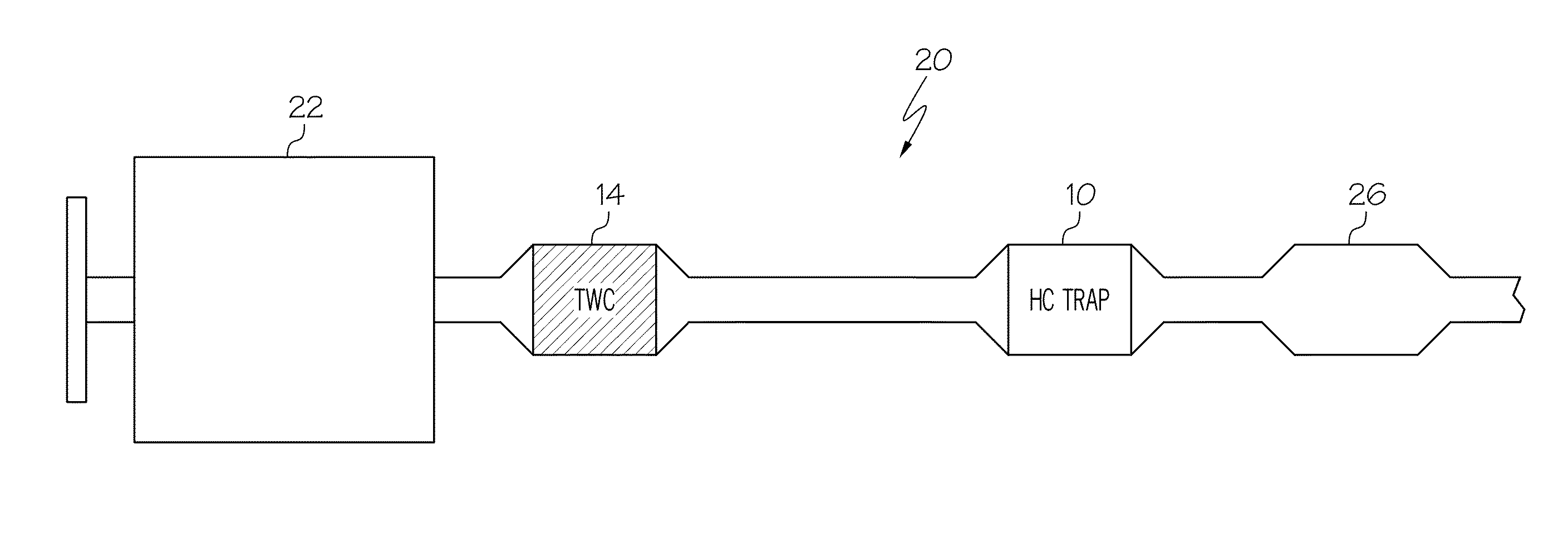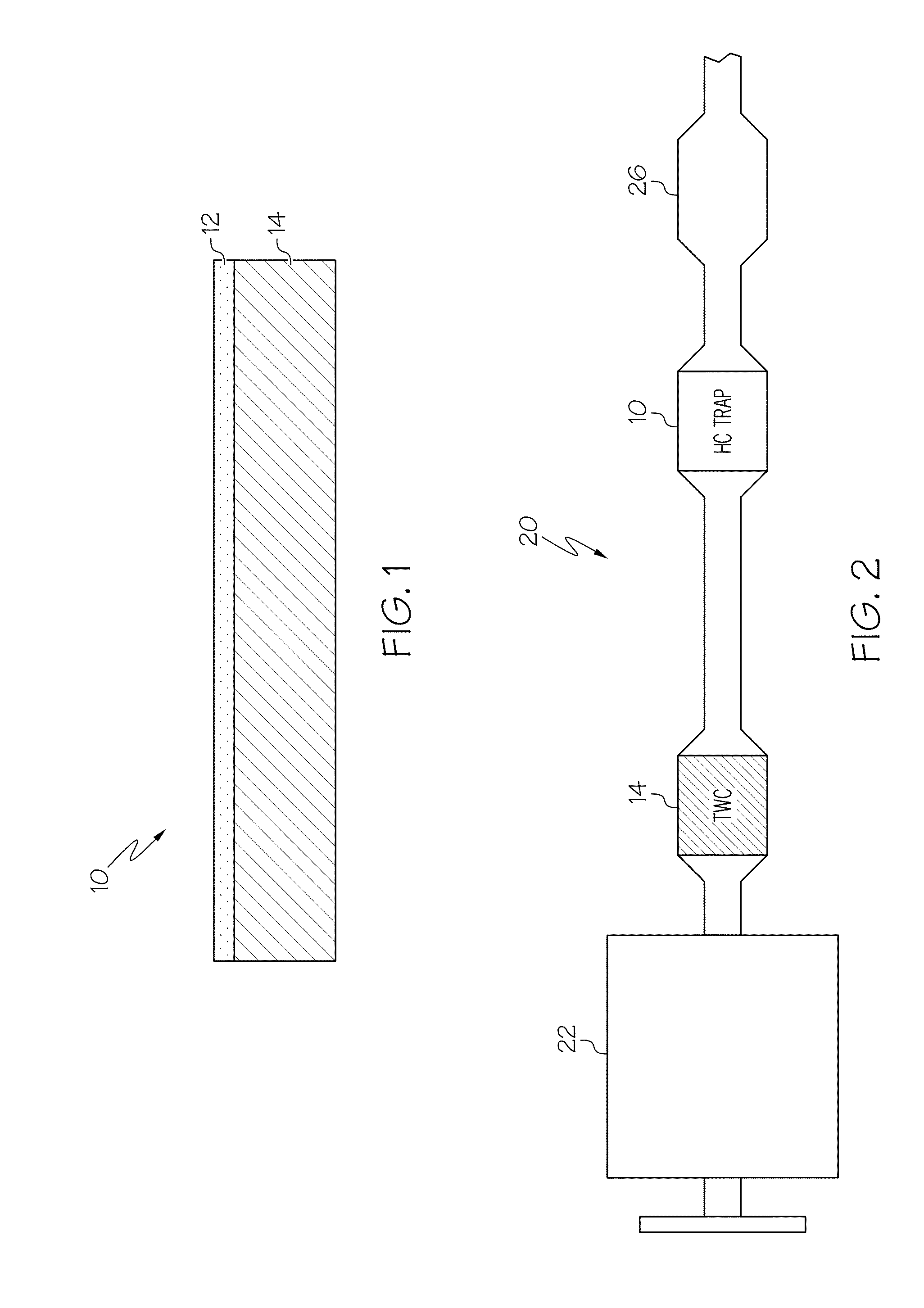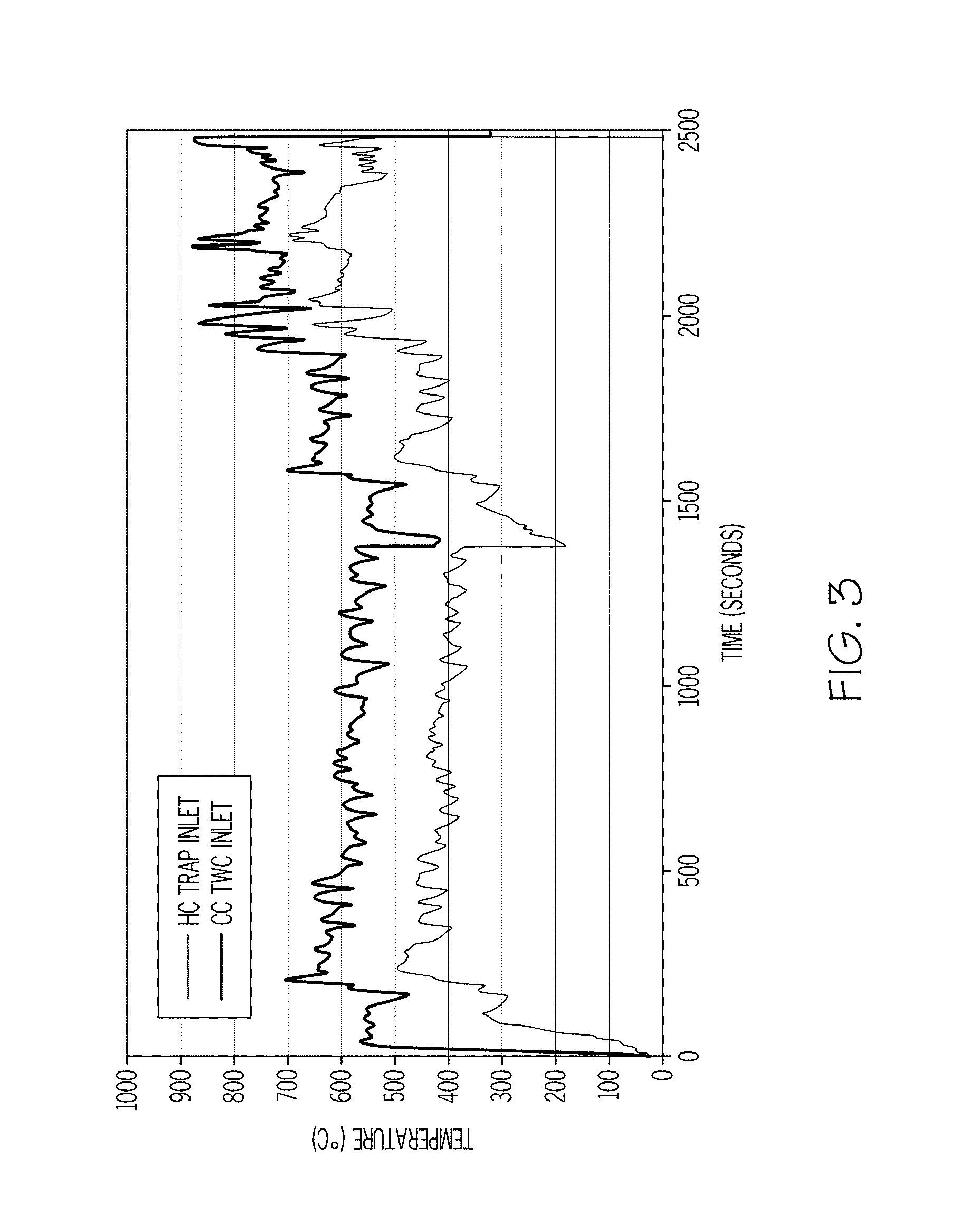Low temperature catalyst/hydrocarbon trap
a low temperature catalyst and hydrocarbon trap technology, which is applied in the direction of physical/chemical process catalysts, arsenic compounds, separation processes, etc., can solve the problems of reducing the adsorption capacity of hydrocarbons, affecting the adsorption efficiency of hydrocarbons, etc., to achieve good hydrocarbon adsorption capability and reduce cold-start vehicle emissions
- Summary
- Abstract
- Description
- Claims
- Application Information
AI Technical Summary
Benefits of technology
Problems solved by technology
Method used
Image
Examples
example 1
[0048]The emissions from two conventional TWC catalysts and two underbody hydrocarbon traps were measured from the exhaust of a 2.0 liter Ford Focus vehicle during combined FTP and US06 drive cycles, run on a chassis-roll dynamometer. The hydrocarbon traps were positioned approximately 40 inches downstream from a close-coupled three-way catalyst and approximately 57 inches from the exhaust manifold header flange. The FTP (Federal test procedure) drive cycle is used to determine whether a catalyst system can meet regulated emissions standards on a specific vehicle. The US06 drive cycle is a test cycle that is used to represent highway driving where the vehicle operates at higher speed and load conditions than what may be typical of less aggressive drive cycles. FIG. 3 illustrates the exhaust temperatures measured on the vehicle at the close-coupled TWC and underbody HC trap locations during the combined test cycles. As can be seen, due to positioning of the traps, the temperature of ...
example 2
[0049]A catalyst formulation was prepared in accordance with an embodiment of the invention. About 1.5 wt % palladium was dispersed on a CZO support at a weight ratio of 75:25. The catalyst was subjected to laboratory tests in comparison with a conventional catalyzed hydrocarbon trap which was prepared by coating a cordierite monolith support with a zeolite slurry, followed by a heat treatment, coating with a TWC slurry, followed by calcination, then coated with a TWC catalyst and heat treated, and then impregnated with a PGM solution. The HC trap further included a CZO material containing greater than 60% by weight zirconia. The conventional HC trap was designed for aging conditions up to 1000° C. which would typically be encountered in an engine under normal aging conditions.
[0050]The aging conditions for both samples consisted of a 4-mode cycle where the sample midbed temperature was an effective (weighted average) of 760° C. (range of 740° C. to 840° C.) for 50 hours in sulfur-f...
example 3
[0052]A catalyst formulation was prepared as in Example 2 including palladium on a CZO support including zeolite (hydrocarbon trap). The trap was positioned downstream from a bed of beta zeolite having an Si / Al2 ratio of 25 (Zeolyst CP814E). The trap was evaluated for desorption of ethanol in comparison with a conventional hydrocarbon trap including a catalyst and CZO material as described in Example 2. The samples were subjected to a feed containing ethanol at 900 ppm for 30 seconds, followed by removal of ethanol from the feed. The samples were then heated and tested for outlet emissions as a function of outlet temperature.
[0053]As can be seen, ethanol desorption occurred at temperatures between 100° C. to 350° C. during warm-up of the catalyst. As shown in FIG. 5, the hydrocarbon trap comprising palladium on the CZO material oxidized more than 90% of the stored ethanol to CO2 and 8% to CH4 with almost no unconverted ethanol slipping out.
[0054]As shown in FIG. 6, in the convention...
PUM
| Property | Measurement | Unit |
|---|---|---|
| exhaust gas temperature | aaaaa | aaaaa |
| temperature | aaaaa | aaaaa |
| exhaust gas temperature | aaaaa | aaaaa |
Abstract
Description
Claims
Application Information
 Login to View More
Login to View More - R&D
- Intellectual Property
- Life Sciences
- Materials
- Tech Scout
- Unparalleled Data Quality
- Higher Quality Content
- 60% Fewer Hallucinations
Browse by: Latest US Patents, China's latest patents, Technical Efficacy Thesaurus, Application Domain, Technology Topic, Popular Technical Reports.
© 2025 PatSnap. All rights reserved.Legal|Privacy policy|Modern Slavery Act Transparency Statement|Sitemap|About US| Contact US: help@patsnap.com



